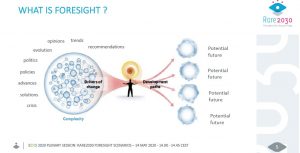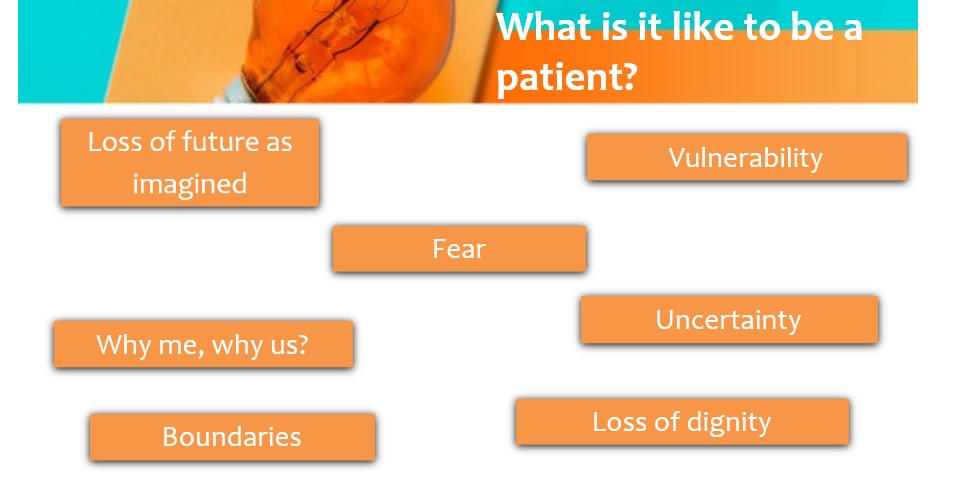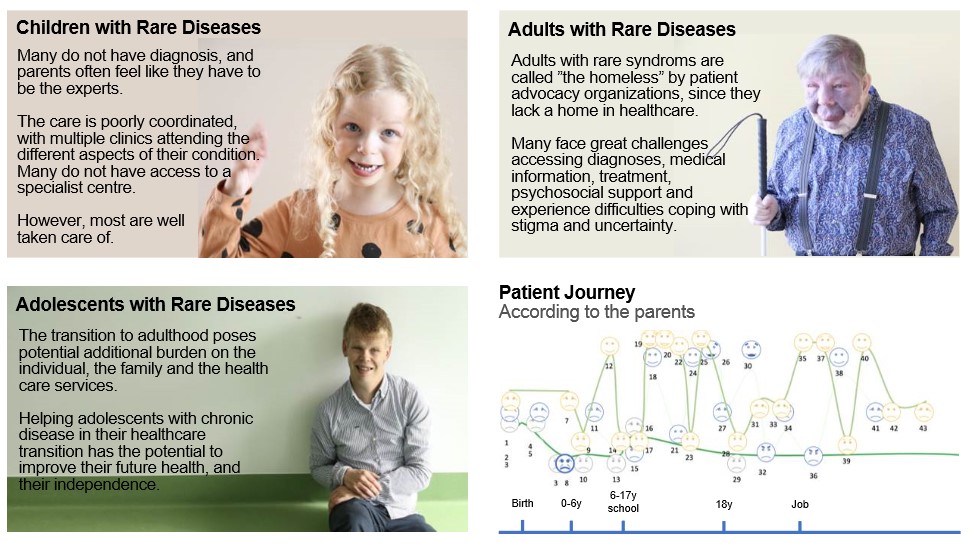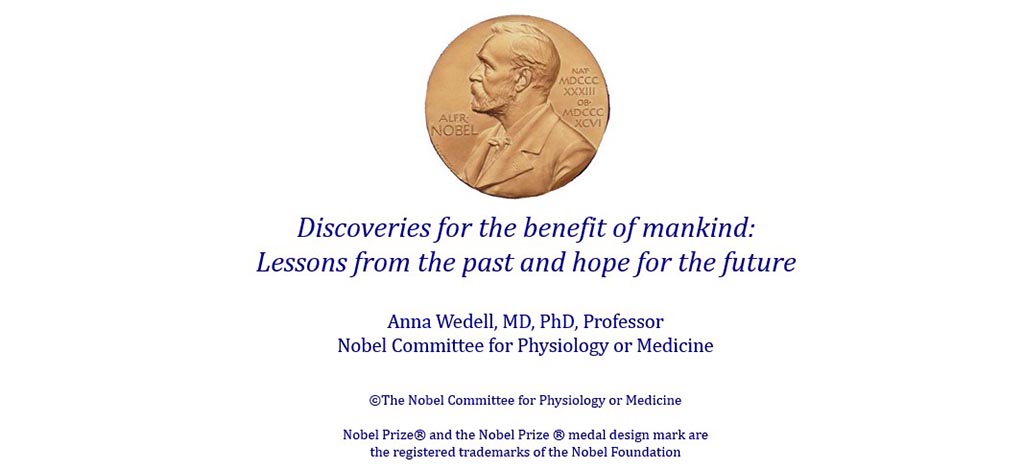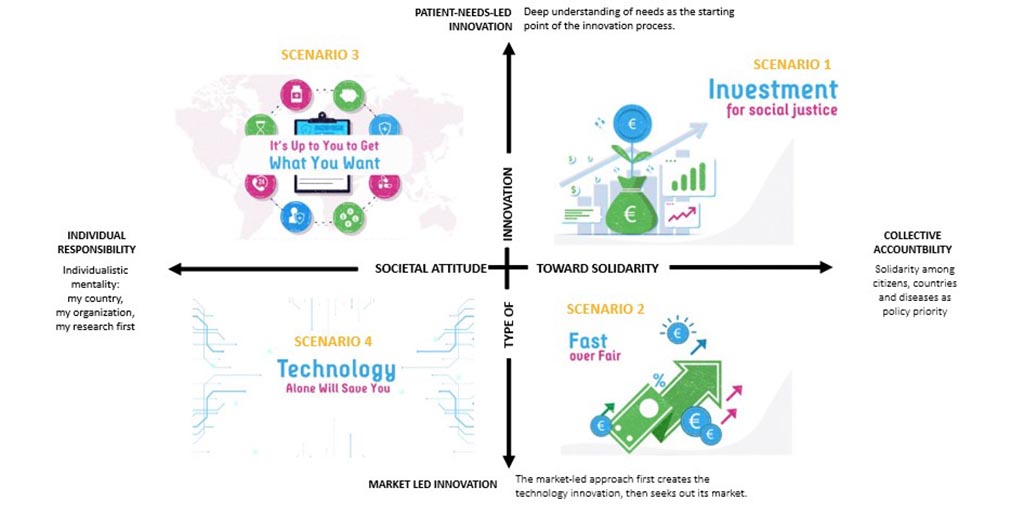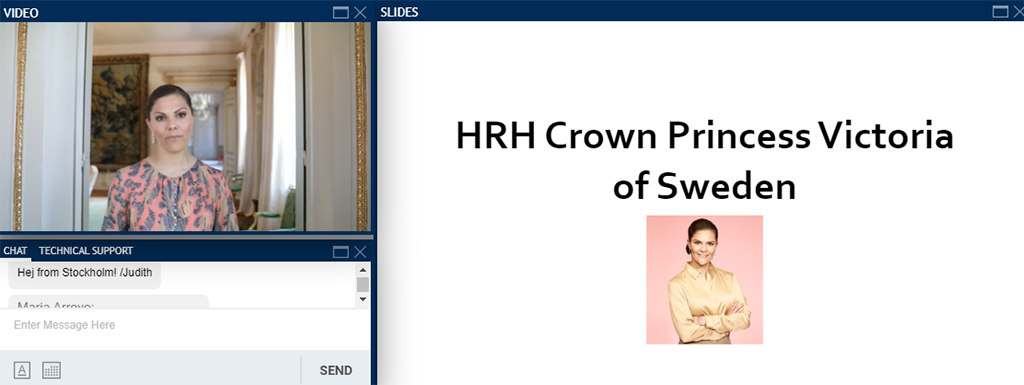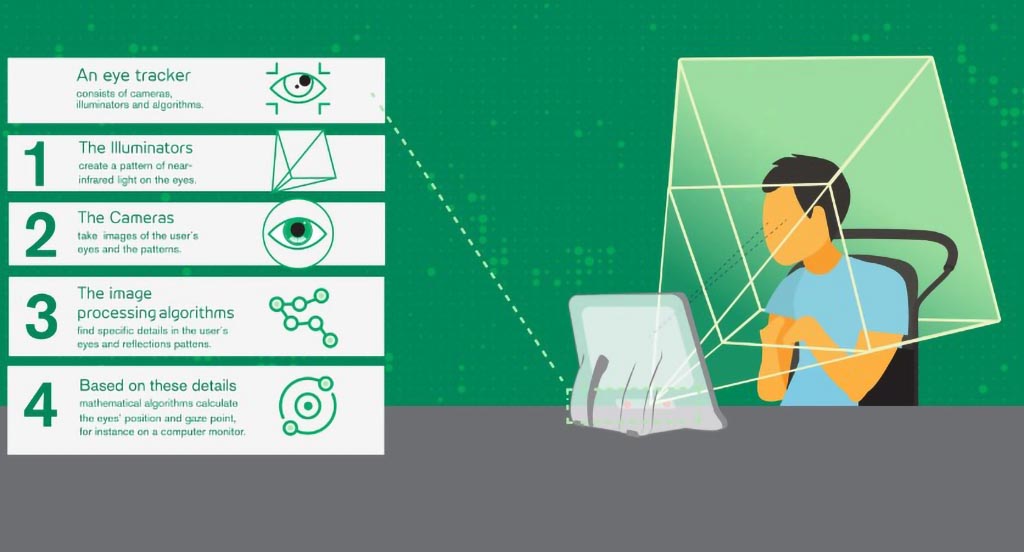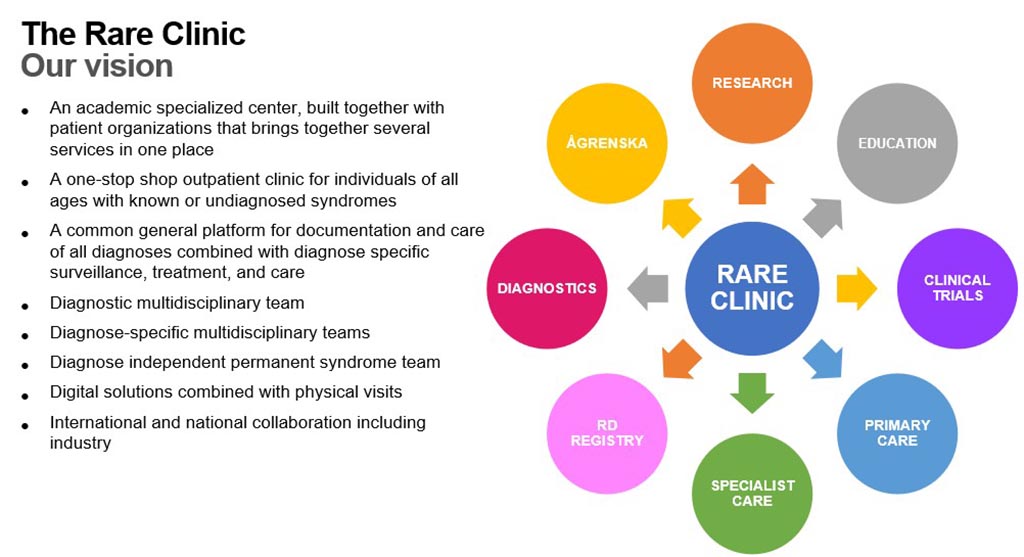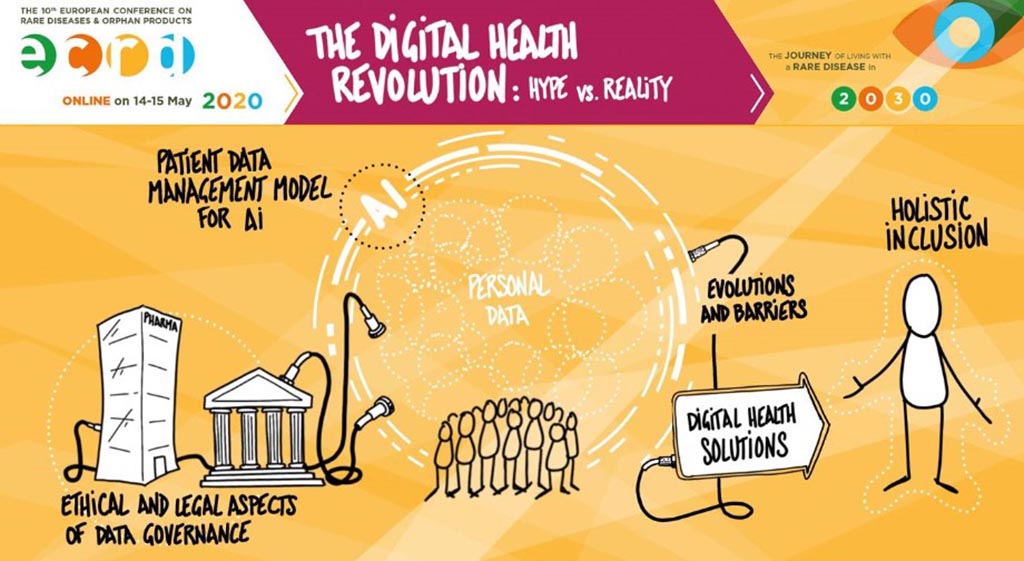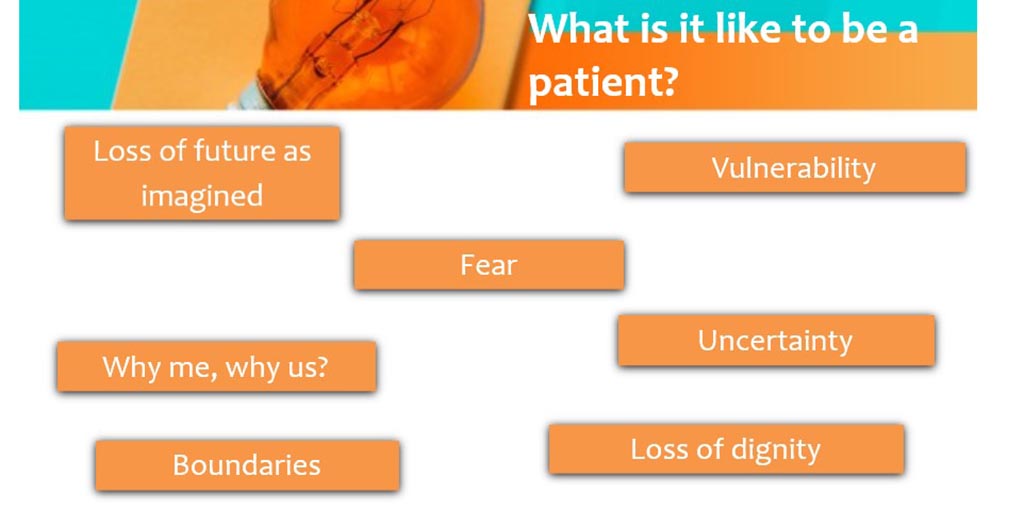The annual conference of Eurordis (European organization for rare diseases) was originally planned for May 14th and 15th in Stockholm (Sweden). This has been changed to an online conference because of the COVID-19/Corona virus.
Originally more than 1500 participants from 57 countries were to attend.
Besides being able to attend various presentations, participants would have been able to see posters from various organizations. We also had a poster representing the CMTC patient journey.
Crown princess Victoria opened the conference and pledged her support to patients with rare diseases as well as their families.
A summary of meetings are given below. Recorded Meetings
Stella Kyriakides
Stella is the European Commissioner of Health and Food Safety. She began with a description of the enormous impact the COVID-19/Corona virus has on our lives. This crisis should teach us that patients are the force and center of developing policies concerning our rare diseases. Patients are the starting point and must have a voice where decisions are made.
The European Reference network, where thousands of health professionals work, play an important role. These health professionals benefit from the clinical guides to good practice that were developed by the reference network. They are essential for collecting the patients’ medical records and for assisting in the development of new treatments and diagnoses.
The European Commission must assure that there is a supply of affordable medicines available in Europe. Stella wants medicines for patients with rare diseases to be included.
Prof. Dr. Milan Macek
Milan gave a presentation of “Rare 2030”.
The goal of this two-year study was to plan for the future and develop policies for the next decennium so that those with rare diseases can have a better future.
We want to make plans for the future, and although the COVID19/Corona crisis has taught us we cannot predict the future, we certainly can be prepared.
What is Foresight?
Foresight projects have the goal of providing data to policymakers so they can make resilient and sustainable policies. This is a complicated process that has three phases. By collecting information about the current situation, forces which cause changes can be identified. They have found 12 major trends that have an influence on policy developments.
Many different scenarios for the future are possible. These can be quite different for various European countries, and also for the USA. These trends can be grouped into two main clusters: one involves dealing with values and the other concerning innovation.
Dr. Lucy McKay
Lucy is CEO of Medics4RareDiseases. The topic of her presentation was shortening the diagnosis through medical education.
The question is whether this involves education or behavioural change. The current situation is that doctors think “If I don’t see this often, why should I learn anything about it?”. The real situation is that the group of “rare” diseases occur quite frequently: in the Netherlands 1 out of 17 patients, and in de USA 1 out of 10. A doctor can help a patient without knowing what the diagnosis is, as long as he/she keeps in mind that it could be a rare disease.
Lucy proposes:
- Show the literature that is available.
- Make accurate and up-to-date information available for the doctor as well as the patients.
- Ask for help when not comfortable with the diagnosis.
- Encourage doctors to investigate possible examinations and research.
- Stress the valuable work of patient organizations.
We would advise medical professionals:
- Recognize the importance of rare diseases for their career.
- Remember to consider a rare disease when the symptoms do not match the diagnosis.
- Be aware of the challenges of life with a rare disease.
- Take advantage of the globally available sources of information about rare diseases
- Get help from, and give help to, organizations dedicated to rare diseases when treating patients.
Daniel Forslund
Daniel’s presentation deals with the digitizing of the health care in Sweden. The innovations in health care, using digital tools (eHealth), are meant to deal with the frequently occurring frustrations of both patients and health care professionals. This is a problem in virtually every country.
Health care workers want:
- To be able to spend more time on the patient, and less on administration and bureaucracy.
- To increase patient safety by using secure access to relevant records and information.
- To recruit a new generation to work In the health care system.
Patients want:
- Flexibility, better access, and better service in health care.
- Continuity and freedom for patients with chronic diseases.
Digitizing data is the new normal in Swedish health care. The patient decides how he/she comes in contact with health care professionals (telephone, chat, video, or in-person visits). This means that all health care professionals are required to offer their services digitally. Digital consultations are billed the same as in-person consultations. Digital care is available everywhere.
Patients expect health care workers are available on-line. In Stockholm, 39,000 patients use digital services each day to, for example, access their medical records, make appointments, and order prescription refills.
The digitalization is happening even faster because of the COVID19/Corona virus! The number of video consultations has increased by 1000% during this crisis. All the emergency hospitals in Stockholm were connected within three weeks in order to reduce the need for patients to travel, therefore increasing their safety.
Themes
The conference was built around a number of themes:
- The future of diagnosis: new hopes, promises and challenges.
- Our values, our rights, our future: shifting paradigms towards inclusion.
- Share, care, cure: transforming care for rare diseases by 2030.
- When therapies meet the needs: enabling a patient-centric approach to therapeutic development.
- Achieving the triple as by 2030: accessible, available and affordable therapies for people living with a rare disease.
- The digital health revolution: hype vs. reality.
The full description can be found in the Conference program.
Theme 1 – The future of diagnosis: new hopes, promises and challenges
Evidence demonstrates that people living with a rare disease and their families continue to face serious every day and social inclusion challenges. Rare diseases ensue in a high level of psychological, social and economic vulnerability and are detrimental to people’s active participation in society.
This interlinkage between rarity, vulnerability, inequalities and social exclusion means that there is space for the integration of rare disease strategies into the broader human rights’ agenda, and the health and development efforts at global level, with clear opportunities to contribute to the United Nations Agenda 2030: the Sustainable Development Goals (SDGs). This goal-based framework was agreed in 2015 by all UN Member States with the clear principle to “leave no one behind”. In this sense, the SDGs are interdependent, universal goals that aim to address global challenges (such as poverty, health and climate).
The synergies between the SDGs and rare diseases have been acknowledged in different events, reports and texts of the UN, and there is momentum for international commitments for the benefit of persons living with a rare disease. In particular, the rare disease community has voiced the need to be included in efforts to achieve Universal Health Coverage (UHC) (as part of SDG 3 which focuses on health), as well as in efforts to ensure non-discrimination on the basis of health or disability status (as part of SDG 10 on reducing inequalities, or SDG 8 on decent work for example).
This theme will look at these ongoing advances in international advocacy and discuss the significance they have for different stakeholders of the rare disease community. A key goal of the theme will be to discuss how the rare disease community can translate those global commitments and aspirations into concrete regulatory practices and policies in the national context, which will have a real impact on the daily lives of those affected. Ongoing trends like reduced funding for human rights, an increasingly challenging political and social space, a debilitation of the values of solidarity and equity, and a shrinking space for civil society will be part of the debate, but the overall objective of the theme will be to identify the best practices and potential new practices that prove the value of investing in human rights and inclusion.
Theme 2 – Our values, our rights, our future: shifting paradigms towards inclusion
Evidence demonstrates that people living with a rare disease and their families continue to face serious every day and social inclusion challenges. Rare diseases ensue in a high level of psychological, social and economic vulnerability and are detrimental to people’s active participation in society. This interlinkage between rarity, vulnerability, inequalities and social exclusion means that there is space for the integration of rare disease strategies into the broader human rights’ agenda, and the health and development efforts at global level, with clear opportunities to contribute to the United Nations Agenda 2030: the Sustainable Development Goals (SDGs). This goal-based framework was agreed in 2015 by all UN Member States with the clear principle to “leave no one behind”. In this sense, the SDGs are interdependent, universal goals that aim to address global challenges (such as poverty, health and climate).
The synergies between the SDGs and rare diseases have been acknowledged in different events, reports and texts of the UN, and there is momentum for international commitments for the benefit of persons living with a rare disease. In particular, the rare disease community has voiced the need to be included in efforts to achieve Universal Health Coverage (UHC) (as part of SDG 3 which focuses on health), as well as in efforts to ensure non-discrimination on the basis of health or disability status (as part of SDG 10 on reducing inequalities, or SDG 8 on decent work for example).
This theme will look at these ongoing advances in international advocacy and discuss the significance they have for different stakeholders of the rare disease community. A key goal of the theme will be to discuss how the rare disease community can translate those global commitments and aspirations into concrete regulatory practices and policies in the national context, which will have a real impact on the daily lives of those affected. Ongoing trends like reduced funding for human rights, an increasingly challenging political and social space, a debilitation of the values of solidarity and equity, and a shrinking space for civil society will be part of the debate, but the overall objective of the theme will be to identify the best practices and potential new practices that prove the value of investing in human rights and inclusion.
Theme 3 – Share, care, cure: transforming care for rare diseases by 2030
Fast forward 20 years, the very fabric of our national health and welfare systems will be unrecognisable, transformed by the disruptive innovation and technologies of our modern age. Even today, many of our everyday services have already been radically transformed – private hire car companies now don’t own any cars (Uber), retailers without shops (Amazon) and mobile-only banks (N26) are now commonplace. Our healthcare and welfare systems will not be immune to these changes. The rule book for healthcare will be re-written, and the once familiar building blocks of our traditional hospitals will be transformed into a new suite of health and social care competencies, on-the-go and on-demand experts and virtual clinics.
The digital transformation of healthcare has the potential to bring great benefits to the rare disease community, but it will also create new challenges. Our thirst for knowledge and unwavering scientific advancements will conscribe the diagnostic odyssey to our history books, with most rare diseases being diagnosed at birth or within the first year of the first symptom– all culminating to improve health outcomes, and resulting in a shift in the population needs and burden of care of an ageing rare disease community, facing different challenges of living longer with increased multiple co-morbidities. This survivorship effect will translate into a shift in our demand for different health and social services and service competencies. Adoption of technology, smart sciences and increasing automated health will force an evolution in the role of both health professionals and patients. The line between health care, social care and research will become increasingly blurred, as will our expectations of how care should be delivered.
Theme 4 – When therapies meet the needs: enabling a patient-centric approach to therapeutic development
The objectives of this theme are to take stock of the experience gained so far in the development of medicines for people living with rare diseases and to examine the evolution of the field. We will look at recent scientific innovations and clinical research, regulatory solutions, roadblocks and challenges in developing therapies that match the needs of the patients, as well as ways of embedding real-life evidence into the therapeutic development processes.
Theme 5 – Achieving the triple as by 2030: accessible, available and affordable therapies for people living with a rare disease
There are more life-changing therapies in development for people living with rare diseases than ever before, yet at our current pace, it will still take decades to cover all our unmet needs. The rare disease community still faces a number of challenges in accessing authorised therapies, which indicates that the system in its current design is not functioning to the benefit of all, particularly those people living with a rare disease.
How can we improve the functioning of the system by 2030? What are the solutions to ensure the sustainable development of therapies that are truly available to all? This theme will examine the different aspects of the system which need significant change to make it ‘fit-for-purpose’ now and for our future needs.
Theme 6 – The digital health revolution: hype vs. reality
This theme examines the technological innovations that are underpinning disruption in medicine and science, as well as the legal, ethical and policy foundations that can frame future outcomes in this area. The theme will also look at how technology can support the social inclusion of people living with a rare disease.
Attendees should come away from this theme with a greater understanding of the role of quality data in technologies such as Artificial Intelligence and how this impacts the development of medicines and delivery of care and other services. The theme aims to question the value of such technological innovations, as well as to show the policy frameworks and ecosystems which patient representatives can involve themselves in, in order to bring the patient’s voice to the evolution of policy and ethics in this area.
CMTC patient journey
In close cooperation with Eurordis we have developed a poster about the possible journey of a CMTC patient through his/her life.

